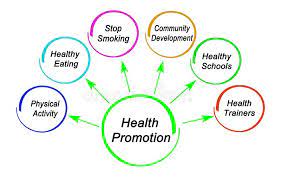Health promotion program evaluation
Over the past few years, new cases of people with diabetes have been on the rise. The increased incidence has been attributed to factors such as overweight, obesity and unhealthy lifestyles. A health promotion program was planned and carried out with the principle objective of improving the health through health education, encouraging people to embrace healthy lifestyles and minimizing complications associated with diabetes type 2( Saunders & Evans 2012). After the health promotion program, information from the target group gathered through structured questionnaires and focused group discussions, so us to help evaluate whether the program added any value to their lives (Saunders & Evans 2012).
The diabetes health program was aimed at reaching five hundred individuals between the age of 28 and 50 years in the community (Saunders & Evans 2012). Unfortunately, only a few individuals of the target group turned up. Activities which were carried out included health education on predisposing factors treatment, complications, and screening of diabetes. However, not all the activities that were designed reached the target group, and this made the stakeholders de-satisfied with the project. The activities which were intended were not all implemented since there was poor turn up of people.
Immediately after the health promotion program, new cases of people with diabetes type two were being reported and also those with uncontrolled blood sugar were still noted in various healthcare settings. These results clearly indicated that the objectives of the health program were partially met. Nevertheless, this could have been attributed to external factors such as cultural background which hindered individuals from taking certain foods or low economic status which limited people from accessing medical services and buying materials for blood-sugar monitoring (Bauman & Nutbeam, 2013).
Since the program was unsuccessful, new strategies were raised so as to ensure the success of future programs. This would involve coming up with better modes of communication to the individuals such as brochures and through television. This would help in adding weight to various messages and also acting as constant reminders on diabetes avoidance (Bauman & Nutbeam, 2013).
References
Saunders, R. P. & Evans M. H. (2012). Developing a process-evaluation plan for assessing health promotion program implementation: a how-to guide. Health Promotion Practice, 6(2), 134-147.
Bauman, A., & Nutbeam, D. (2013). Evaluation in a nutshell: a practical guide to the evaluation of health promotion programs. McGraw Hill.
Want help to write your Essay or Assignments? Click here


